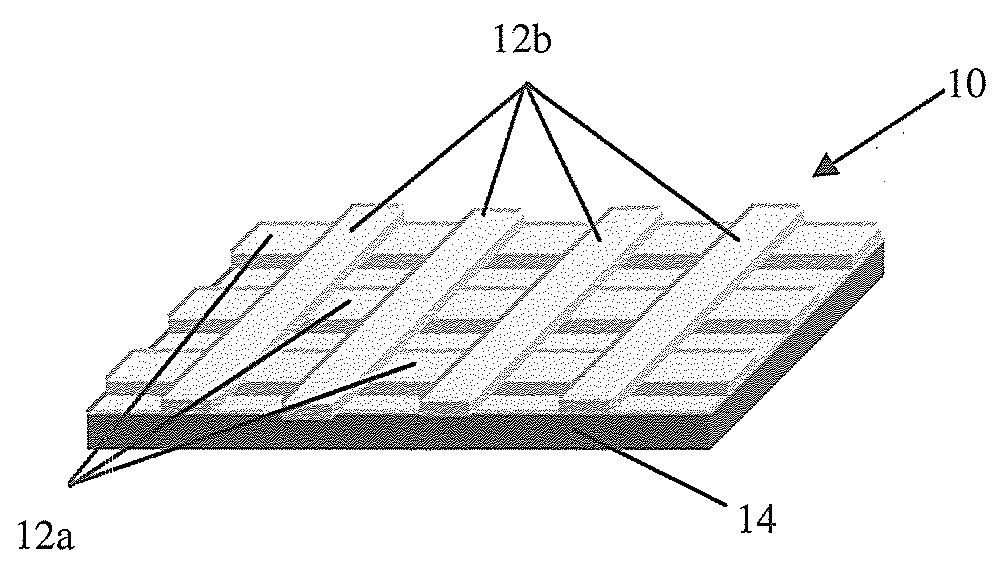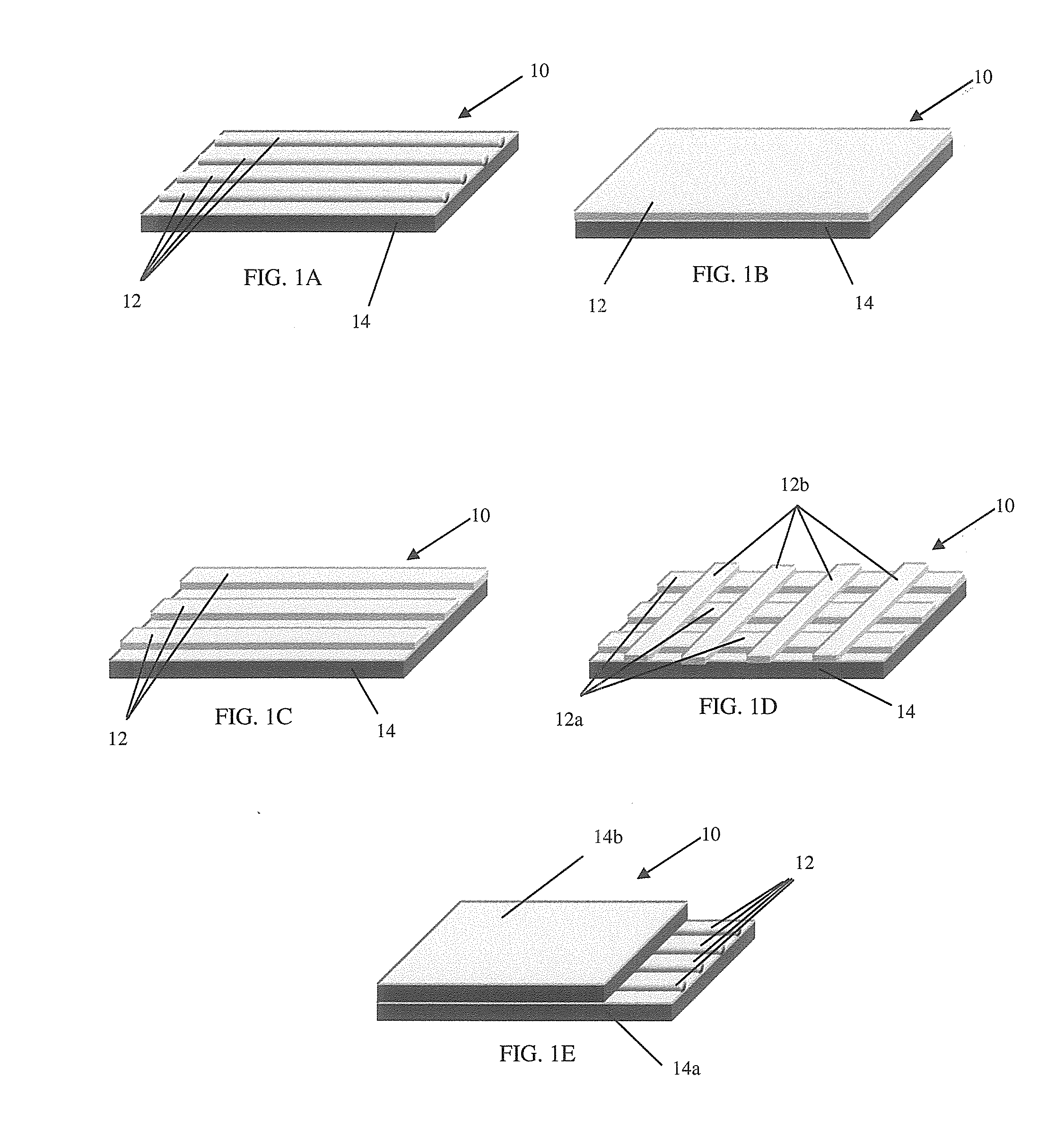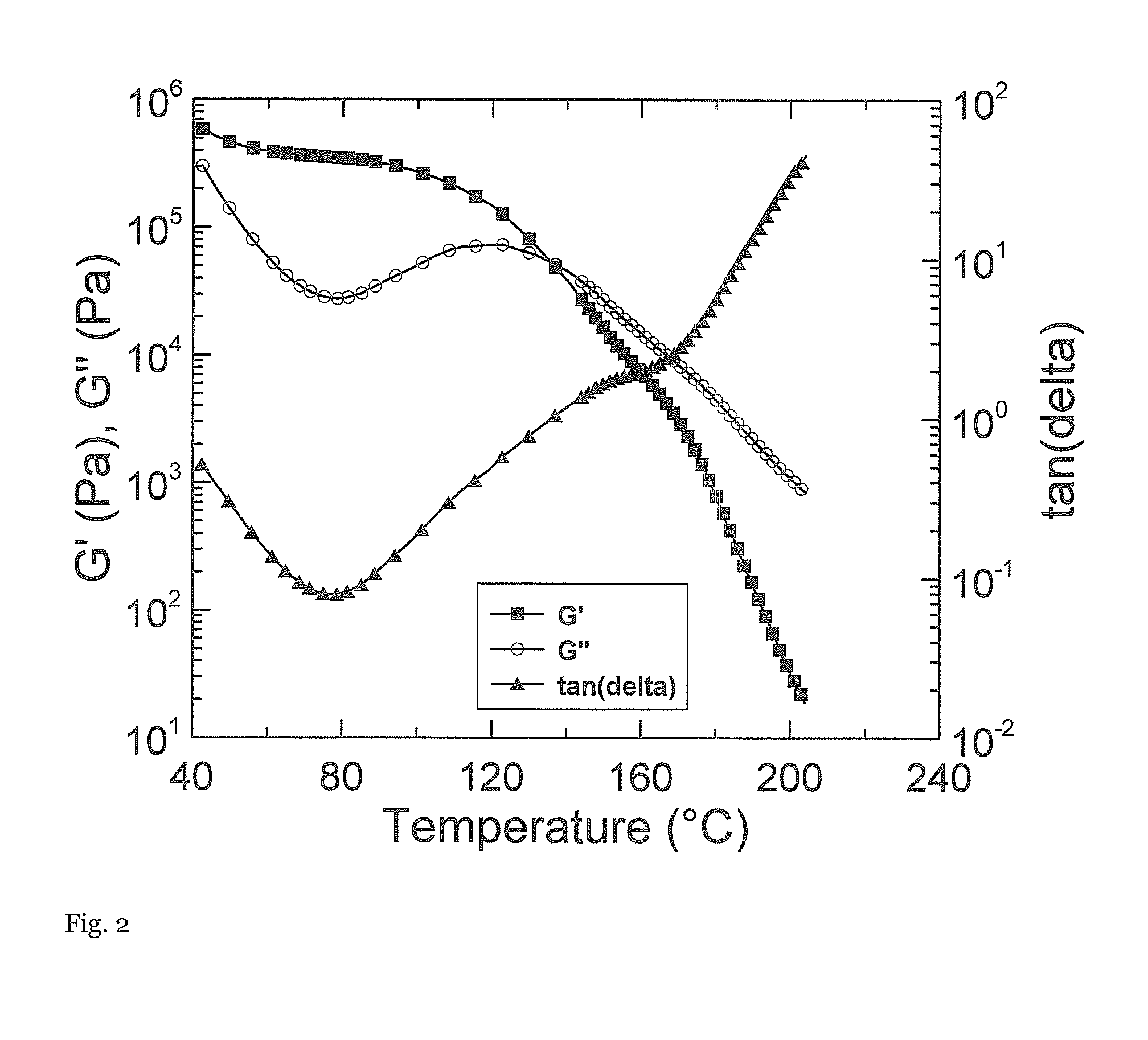Elastomeric compositions that resist force loss and disintegration
a technology of elastomeric compositions and resisting force loss, applied in the field of absorbent articles, can solve the problems of slow recovery stretch laminate being held under strain, absorbent articles, slow recovery stretch laminate not being in its fully relaxed state,
- Summary
- Abstract
- Description
- Claims
- Application Information
AI Technical Summary
Benefits of technology
Problems solved by technology
Method used
Image
Examples
example 1
[0219]Slow recovery stretch films are prepared using varying amounts of elastomeric polymer, modifying resin, and mineral oil as shown in Table 2. The blending is accomplished either by extrusion of the blend (Sample Films F1a, F1b, and F2) or by small batch melt mixing and compression molding into a film on a heated Carver Press (Sample Films F3-F6). Sample Films F1a and F1b comprise a nonhydrogenated styrene-isoprene-styrene (SIS) triblock copolymer, commercially available under the trade designation Vector® 4211 from Dexco Polymers L.P., Houston, Tex. Sample Films F2 and F3 comprise an hydrogenated styrene-ethylene-ethylene / propylene-styrene (SEEPS) triblock copolymer, commercially available under the trade designation Septon™ 4033 from Kuraray America Inc., Pasedena, Tex. Sample Films F4-F6 comprise a combination of SEEPS triblock copolymers, commercially available under the trade designations Septon™ 4033 and Septon™ 4044, both from Kuraray America Inc., Pasedena, Tex., and whe...
example 2
[0224]Compression molded films of elastomer compositions F7 and F8 listed in Table 4 are prepared according to the film preparation methods described in Example 1, where the metal temperatures of the mixer are set to about 195° C. and where H2861 is an adhesive commercially available from Bostik, Inc., Wauwatusa, Wis. The weight ratio of added elastomer (Septon 4033) to modifying resin (Eastotac H-142R) to mineral oil (White Britol 50T) in elastomer film samples F7 and F8 is equivalent to the control elastomer film F3 from Table 2. Films of the elastomer compositions in Table 4 are measured according to the Order-Disorder Temperature method described in the Test Methods section above. The order-disorder temperatures (ODT) are shown in Table 4, and illustrate the effect an adhesive composition can have on the ODT of an elastomer composition of the present disclosure.
TABLE 4Elastomer Compositions (weight percent)and Order-Disorder TemperatureSample Film NumberF3F7F8Film Component*Sept...
example 3
[0225]Slow recovery stretch laminates are prepared with the extruded films disclosed in Table 2 (Sample Films F1b and F2). Elastomeric film samples are cut to be approximately 40 millimeters wide by approximately 117 millimeters long for Sample Film F1b or approximately 40 millimeters wide by approximately 147 millimeters long for Sample Film F2. The mass of each elastomeric film is measured to the nearest 0.1 milligram. The basis weight (grams per square meter, “gsm”) of each film is calculated by dividing the film weight (in grams) by the film area (length by width in square meters). The slow recovery stretch laminates in Table 5 are adhesively bonded multilayer laminate structures comprising two nonwovens sandwiching the elastomeric film. The nonwoven, available from First Quality Nonwovens (Great Neck, N.Y.), is a spunbond-meltblown-spunbond polypropylene thermally bonded nonwoven having a basis weight of about 22 gsm. One of the nonwovens is bonded to the first surface of the e...
PUM
| Property | Measurement | Unit |
|---|---|---|
| order-disorder transition temperature | aaaaa | aaaaa |
| order-disorder transition temperature | aaaaa | aaaaa |
| order-disorder temperature | aaaaa | aaaaa |
Abstract
Description
Claims
Application Information
 Login to View More
Login to View More - R&D
- Intellectual Property
- Life Sciences
- Materials
- Tech Scout
- Unparalleled Data Quality
- Higher Quality Content
- 60% Fewer Hallucinations
Browse by: Latest US Patents, China's latest patents, Technical Efficacy Thesaurus, Application Domain, Technology Topic, Popular Technical Reports.
© 2025 PatSnap. All rights reserved.Legal|Privacy policy|Modern Slavery Act Transparency Statement|Sitemap|About US| Contact US: help@patsnap.com



